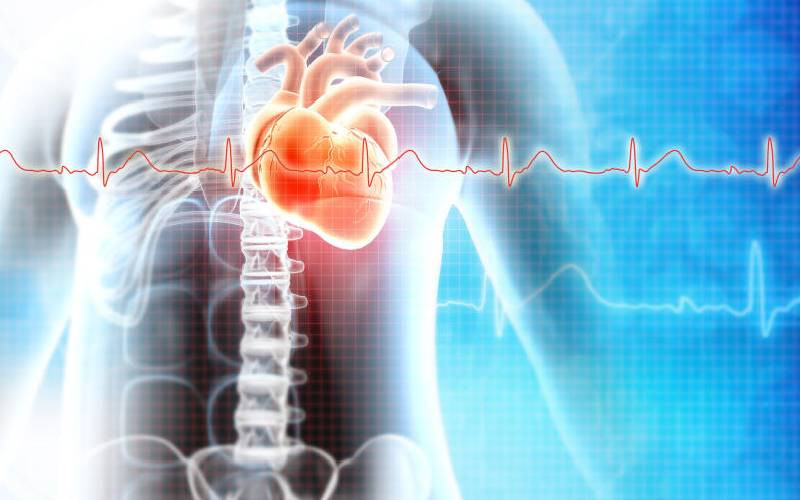
Most doctors are not prescribing enough of physical activities to patients even when shown to be the best medicine.
Only about 11 per cent of patients are being counselled to get physically active, despite increasing obesity, cholesterol, high blood pressure and too little physical activity.
“Even fewer patients are getting written prescriptions for physical activities or followed up as doctors do with medicines,” says a recent study.
It is a fact that Zuki, 42 and a plus size, confirms. She says she is on high blood pressure medication but her doctors have never asked or advised on physical activities. “The cost of the medicines and their regularity are driving me crazy,” she adds.
At Zaky’s Gym in Embakasi, where Zuki is a client, a wellness instructor says none of their 50-plus clients are there on doctors’ prescriptions.
“Most are women searching for a better body tone and shape, with health benefits coming as a happy side effect,” says the instructor.
The findings by Micky Olutende Oloo, a research assistant at the Masinde Muliro University’s Department of Health Promotion and Sport Science, says more physical activities (PA) can reduce the risk of several chronic diseases.
“But too few doctors, nurses or clinical officers are prescribing PA to their patients and even fewer are following it up,” says Oloo.
This he says is because PA prescriptions unlike medicines are not reimbursed monetarily as well as the current high emphasis on medicines over preventive health care.
“Considering the numerous preventative and curative benefits associated with active lifestyles, health professionals should prescribe more of PA to their patients,” says Oloo.
The first and only national survey on the risk factors for non-communicable diseases by the Ministry of Health says only 12 per cent of patients are being counselled on PA by their doctors.
The Kenya Stepwise Survey shows close to 46 per cent of Kenyans do not engage in vigorous physical activity, with 15 per cent being dangerously sedentary.
“I used to belong to the 15 per cent before I joined the gym. This was after I could not attend to even the least of domestic chores without losing my breath,” says Zuki.
Oloo with Peter Bukhala and Bernard Wesonga, all of Masinde Muliro University have published their findings in the June issue of the Journal of Physical Activity Research.
The team had involved 221 nurses, doctorsand clinical officers working at all levels of public hospitals in Kakamega County.
“Kakamega because it is one of the most populous counties in Kenya, hence a good representation of the country,” says Oloo.
Forty seven per cent of the professionals said they occasionally asked patients about their physical activity levels but only a third counselled them to take up exercise.
“Another interesting finding was that 34 per cent of the workers occasionally referred patients for fitness assessment or appraisal,” says Oloo.
The team found only about a quarter of health professionals were themselves taking up PA as recommended.
This, Oloo says partially explains why there is low physical activity prescription to patients from health workers.
“Healthcare professionals are projecting their own motives and values of exercise onto their patients,” he says.
Doctors were the least likely to prescribe physical exercises compared to nurses and clinical officers in that order, shows the study.
The team recommends a policy that requires health workers to prescribe PA whenever it is the best option for the patient, especially those at risk of chronic diseases.
Oloo explains that adequate PA has been shown to lower the risk of diabetics and improve the health of people with arthritis and heart conditions.
The yet to be launched National Guidelines for Healthy Diets and Physical Activity 2017, has a comprehensive PA workout programme for Kenyans of all ages.
“Physical activity undertaken throughout the life cycle reduces the risk of heart disease, diabetes and cancer,” says the guidelines.
Physical exercises, the guidelines indicate to also reduce the risk of raised blood pressure, blood sugar and obesity.
www.rocketscience.co.ke
 The Standard Group Plc is a multi-media organization with investments in media platforms spanning newspaper print
operations, television, radio broadcasting, digital and online services. The Standard Group is recognized as a
leading multi-media house in Kenya with a key influence in matters of national and international interest.
The Standard Group Plc is a multi-media organization with investments in media platforms spanning newspaper print
operations, television, radio broadcasting, digital and online services. The Standard Group is recognized as a
leading multi-media house in Kenya with a key influence in matters of national and international interest.











